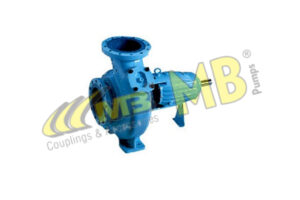In civil engineering and construction, it is an essential technique, especially when dealing with groundwater management issues. It is essential for regulating groundwater levels in order to ensure safe and effective excavation and building. The best dewatering pump manufacturers in India will explore the ins and outs of wellpoint dewatering in this post, including its fundamentals, uses, advantages, crucial factors, and ideal tools for the task.
What is Wellpoint Dewatering?
By eliminating water from saturated soils, a technique known as wellpoint dewatering facilitates safe and effective excavation and building. The procedure is frequently used in pipeline installation, tunnelling, trenching, and foundation building.
The Wellpoint Dewatering Process:
One very useful method for lowering groundwater levels and establishing a stable, secure working environment is wellpoint dewatering. MWI is an expert in wellpoint dewatering systems, which are made especially to drain water out of unsteady or unstable ground situations like trenches and shaky foundations. Shallow wells with a tiny diameter that are thoughtfully placed throughout the region are used in this method. A major pipe system connects these wellpoints, and a high-efficiency water pump is attached to them. With its outstanding performance, our dewatering pump is especially well-suited for wellpoint applications. Water levels are significantly lowered after the wellpoints are erected using jetting tubes and the water pump quickly extracts the water.
Benefits:
- Groundwater Control: By lowering the water table and creating a stable working environment, wellpoint dewatering keeps the soil from becoming saturated. It permits building to continue in regions when groundwater levels are high.
- Enhanced Stability: Dewatering makes the soil stronger and more stable by lowering the pore water pressure within the soil. By doing this, possible cave-ins, soil failures, and associated building hazards are avoided.
- Cost and Time Efficiency: By creating a dry working space, it can shorten construction schedules. It permits continuous construction operations and does away with the requirement for large-scale excavation.
- Environmental Considerations: By limiting the amount of water that is released into the surrounding surroundings, wellpoint dewatering reduces the negative effects on the environment. It also helps to clear the groundwater of impurities.
Considerations:
- Site Investigation: Prior to putting this into practice, a complete grasp of the hydrogeology of the site is essential. It is necessary to evaluate elements including water quality, groundwater flow, and soil type.
- System Design: The wellpoint system’s efficiency depends on its proper architecture and design. A few things to think about include the header pipe arrangement, wellpoint spacing, and the necessary pumping capacity.
- Regulations and Permits: Permits may be needed from local authorities for projects involving wellpoint dewatering. It is necessary to guarantee adherence to environmental standards and discharge restrictions.
- Observation and upkeep: To guarantee the dewatering system’s efficacy, regular monitoring of its components, performance, and water levels is required. For the system to last a long period, proper maintenance and prompt repairs are essential.
Another thing to think about is the dewatering pump’s size. It is essential to use the right equipment in order to remove water from the building site in an efficient and effective manner.
Conclusion:
Wellpoint dewatering is a crucial method in civil engineering and construction that effectively addresses groundwater management issues. By using shallow wells and vacuum-assisted pumps, this technique lowers the water table and creates a controlled environment for building and excavation activities. Groundwater control, enhanced stability, cost and time efficiency, and environmental considerations are just a few advantages of it. Nonetheless, a number of crucial factors need to be taken into account, including carrying out a comprehensive site study, guaranteeing appropriate system design, securing licences and adhering to laws, and putting in place routine monitoring and maintenance. Wellpoint dewatering is a dependable and effective method for controlling groundwater levels in a variety of building and dewatering projects when certain guidelines and considerations are followed. Get more knowledge related to this from the best dewatering pump manufacturers in India. Contact MB Exports, India.
Read more about What Makes Genuine Bauer Couplings the Best Option?




